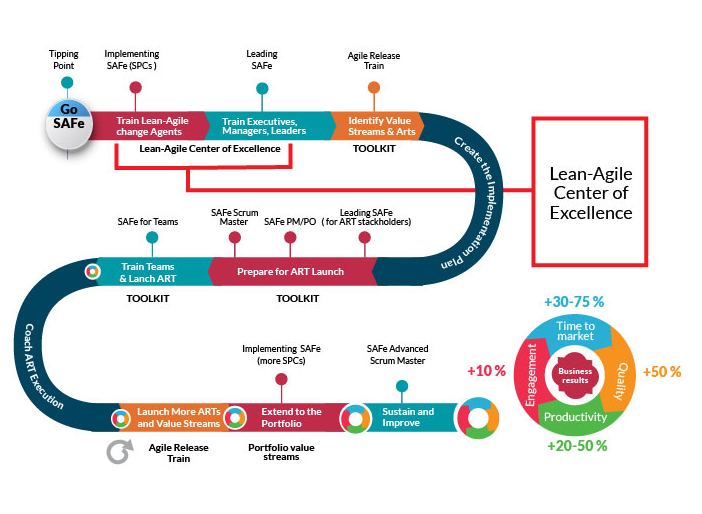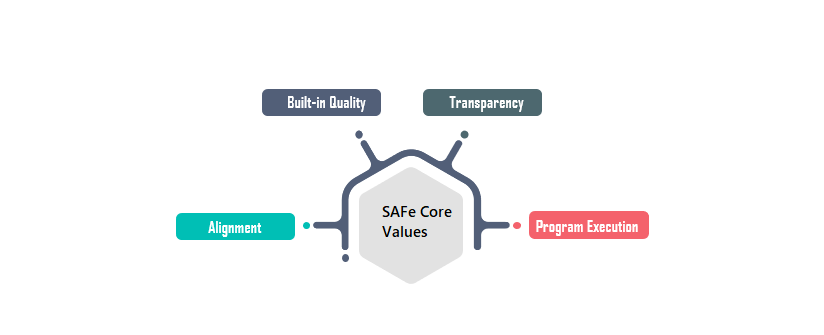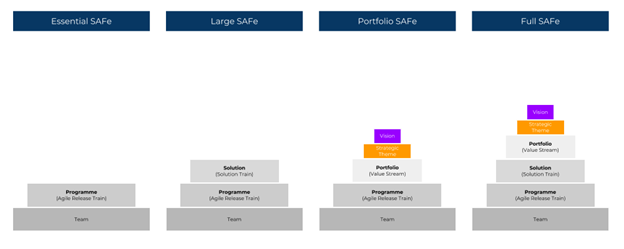Agile SAFe
Introduction to SAFe
SAFe, or the Scaled Agile Framework, is a methodology designed to help large organizations implement Agile practices across multiple teams. It combines principles from Agile, Lean, and systems thinking to provide a structured approach for scaling Agile practices enterprise-wide. SAFe is particularly useful for coordinating complex projects involving numerous teams, ensuring alignment, and delivering value efficiently.
This framework is divided into three segments. Team, Program and Portfolio. It allows team to:
- Implement lean-Agile software and systems at enterprise level.
- It is based on lean and Agile practices.
- It gives a clear picture on how to work at the enterprise portfolio, value stream, program, and Team.
- It is designed to meet all the stakeholder's needs within an Organization.

Why should we use SAFe Framework?
SAFe offers several benefits for organizations looking to scale Agile practices:
- Enhanced Alignment: It ensures that all teams are working towards common objectives, aligning their efforts with the organization's goals.
- Improved Quality: By emphasizing built-in quality, SAFe helps in delivering high-standard products consistently.
- Increased Productivity: SAFe's structured approach aids in optimizing workflows, leading to better productivity across teams.
- Faster Time-to-Market: With its iterative development cycles, SAFe enables quicker delivery of products to the market.
When to Use the Scaled Agile Framework?
SAFe is particularly beneficial in scenarios such as:
- Large-Scale Projects: When multiple Agile teams need to collaborate on complex projects.
- Enterprise-Wide Agile Adoption: For organizations aiming to implement Agile practices across various departments.
- Need for Structured Coordination: When there's a requirement for synchronized planning and execution among teams.
- Continuous Delivery Goals: For businesses striving for regular and predictable product releases.
SAFe Agile Foundation principles
SAFe is built upon several foundational principles that guide its implementation:
- Lean-Agile Leadership: Encouraging leaders to drive and sustain organizational change.
- Team and Technical Agility: Fostering Agile teams that can deliver high-quality solutions.
- Agile Product Delivery: Focusing on customer-centric approaches to deliver value.
- Enterprise Solution Delivery: Managing the development of large and complex solutions.
- Lean Portfolio Management: Aligning strategy and execution through effective portfolio management.
SAFe Core Values
The core values of SAFe are essential for its successful implementation:
- Alignment: Ensuring that all teams and stakeholders are moving in the same direction.
- Built-in Quality: Embedding quality practices throughout the development process.
- Transparency: Promoting open communication and visibility into processes and progress.
- Program Execution: Focusing on delivering valuable solutions consistently and reliably.

SAFe Configurations
SAFe offers different configurations to suit various organizational needs:
- Essential SAFe: The foundational configuration, providing the minimal elements necessary for successful Agile development.
- Portfolio SAFe: Adds portfolio-level considerations, including strategy and investment funding.
- Large Solution SAFe: Addresses the needs of building large and complex solutions that require multiple Agile Release Trains.
- Full SAFe: The most comprehensive configuration, combining all levels for organizations requiring full-scale Agile implementation.

